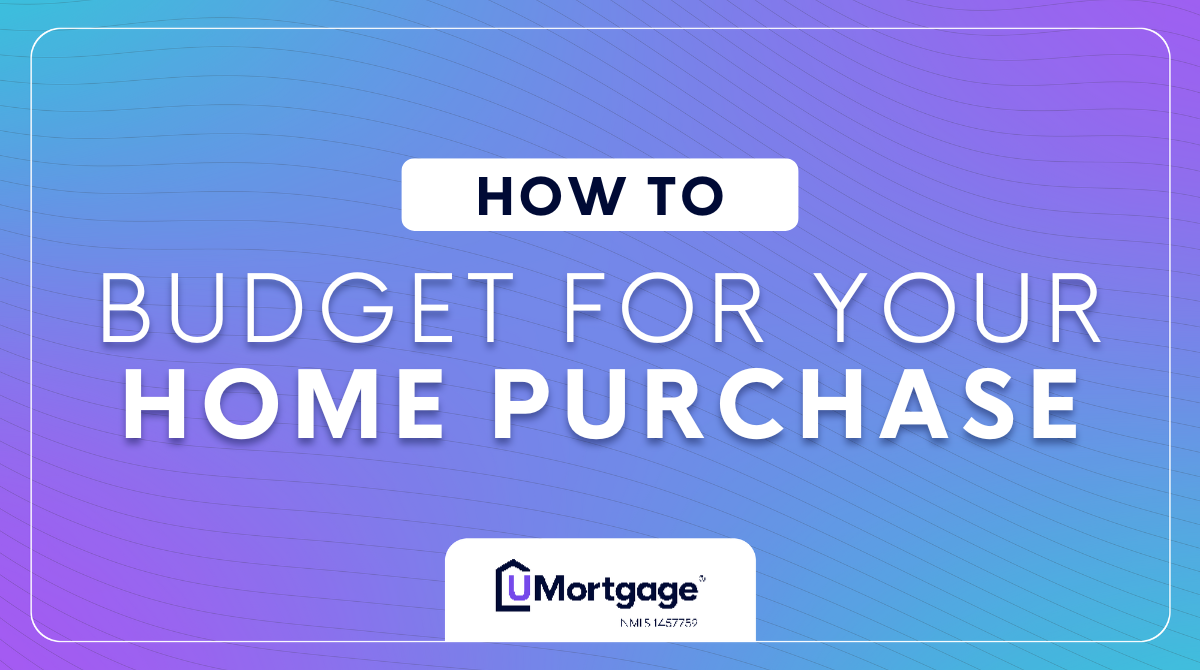How To Budget to Buy a Home: The Essential Homebuyer’s Guide
Published: June 11, 2024

How To Budget to Buy a Home: The Essential Homebuyer’s Guide
Buying a home is a significant financial milestone, but it also requires a significant financial outlay. If you’re dreaming of buying a home, you first need to make sure you have a solid budget in place to pay for the one-time fees like your down payment and closing costs as well as the new recurring expenses that come with homeownership.
In this blog, we’ll share some tips to help you budget for your home purchase and ensure a smooth transition into homeownership. Below, you can find more details about how to set your budget, which expenses you should keep in mind, and how to track your budget throughout the buying process and into homeownership.
Setting Your Budget
Before you start to set money aside, you first need to determine your budget. There are three main things that you need to consider: your buying power, how much you plan to put toward your down payment, and what your closing costs might look like.
Determine Your Affordability with a Pre-Approval
The first step in budgeting for a home is to assess your financial situation and determine how much you can comfortably afford. Lenders typically recommend that you follow the 28/36 rule.
Based on this rule, your monthly housing expenses, including mortgage payments, property taxes, and insurance, should not exceed 28% of your gross monthly income. Total monthly debt payments—which include housing expenses and other existing debts such as student loans or a car payment—should not exceed 36% of your gross monthly income.
A great way to get started with a snapshot of your homebuying budget is to work with a UMortgage Loan Originator to get pre-approved. Your pre-approval will use your income, credit, and existing debts to provide you with an estimate of your buying power. If you want an immediate estimate of what you can afford, feel free to use my free affordability calculator.
Calculate Your Down Payment
Unless you’re buying your home with a VA loan, you’ll have to pay a down payment when you close on your home. Saving for a larger down payment can help you secure a lower interest rate and avoid private mortgage insurance (PMI), which can add significant costs to your monthly payments. However, with a conventional loan, you can buy with as little as 3% down. For more information on down payment minimums, reach out to your UMortgage Loan Originator.
Factor in Closing Costs
Closing costs are the additional fees and expenses associated with the home-buying process, such as lender fees, title insurance, and property taxes. These costs can range from 2% to 5% of the home's purchase price, so it's crucial to factor them into your budget. As you start working through the beginning stages of your homebuying journey, you can work with your UMortgage Loan Originator for an estimate of your expected closing costs.
Accounting for New Expenses
While homeownership is exciting, it also comes with a handful of new one-time and ongoing expenses. As you’re budgeting for your home purchase, it’s important to consider the expenses below so you’re prepared when that first new bill hits your mailbox.
Homeowners Insurance
Homeowners insurance is a mandatory expense that protects your investment against potential damages or losses. Homeowners insurance costs vary depending on factors such as the home's location, age, and construction type. Once you hit the market, you can connect with your UMortgage Loan Originator or real estate agent for a cost estimate.
Property taxes are an ongoing expense that homeowners must pay annually or semi-annually. These taxes are based on the assessed value of your home and can vary significantly depending on your location.
Typically, your property taxes and homeowners insurance are rolled into your escrow, which adds these expenses incrementally through your monthly mortgage payment.
Utilities
As a homeowner, you’ll be responsible for paying utilities such as electricity, gas, water, and internet/cable services. These expenses can vary based on the size of your home, energy efficiency, and usage habits.
Maintenance and Repairs
When you own your home, you won’t be able to rely on your landlord or property management company to maintain your home. As a homeowner, you’ll be responsible for repairing various components, such as the roof, appliances, and HVAC systems. It’s essential to budget for these expenses, as they can be costly and unexpected. When you initially buy your home, your inspection will give you a good gauge of the health of these costly components like HVAC systems, plumbing, and roofs.
Tracking Your Budget
Setting your budget is a big step in your journey toward homeownership, but the actual act of following that budget is what will enable you to buy your home. As you inch closer to being able to afford to buy your home, follow these steps to ensure you stow away the necessary funds to turn your dreams of homeownership into reality.
Create a Detailed Budget
Develop a comprehensive budget that includes all your monthly expenses, such as mortgage payments, utilities, insurance, and other recurring costs. This will help you identify areas where you can cut back or allocate funds more effectively.
Use Budgeting Tools and Apps
There are plenty of great budgeting tools and apps out there that streamline the process of tracking your expenses and monitoring your progress. Many apps offer features like categorizing expenses, setting spending limits, and generating reports. There are also plenty of spreadsheet templates that you can use for a more manual budget-tracking experience.
Review and Adjust Regularly
Regularly review your budget and adjust as needed. Your financial situation may change over time, and it's essential to adapt your budget accordingly to ensure you stay on track. As you work along your journey towards homeownership, take some time to connect periodically with your UMortgage Loan Originator to share updates on your budget and discover any new products that might make your home purchase more affordable!
By following these steps, you'll be well-equipped to budget effectively for your home-buying journey. Remember, proper budgeting not only helps you achieve your homeownership goals but also ensures long-term financial stability. Once you’ve closed on your home, you can continue to follow these steps to protect yourself from unforeseen repairs or save for your next big purchase!
